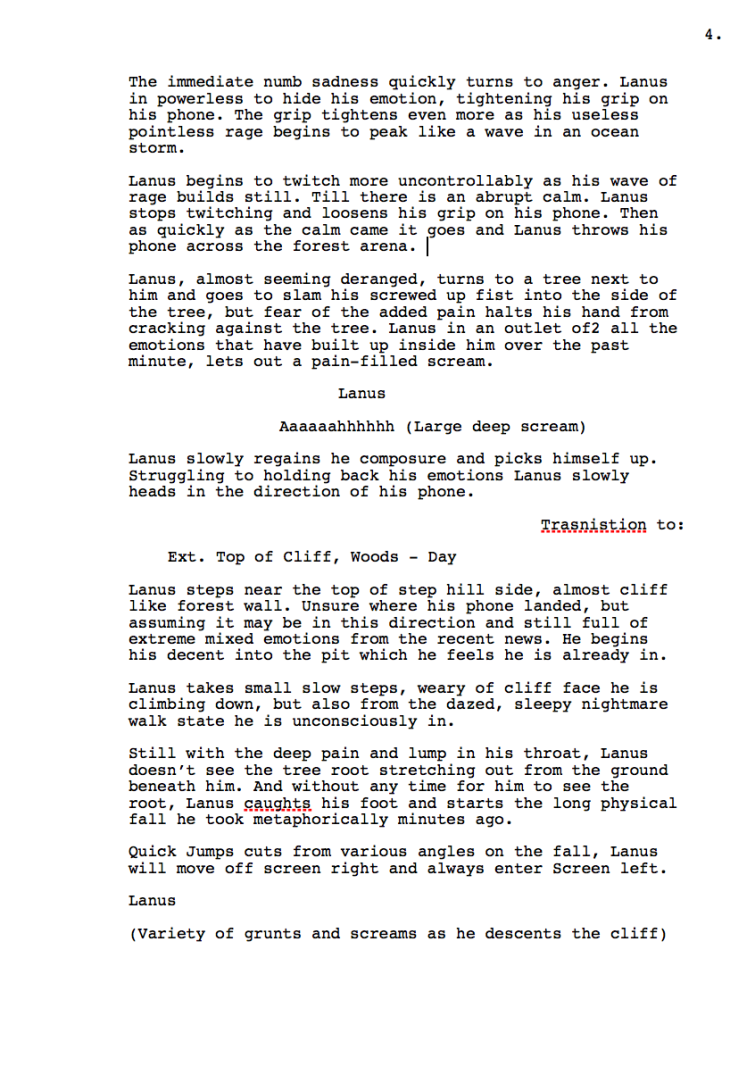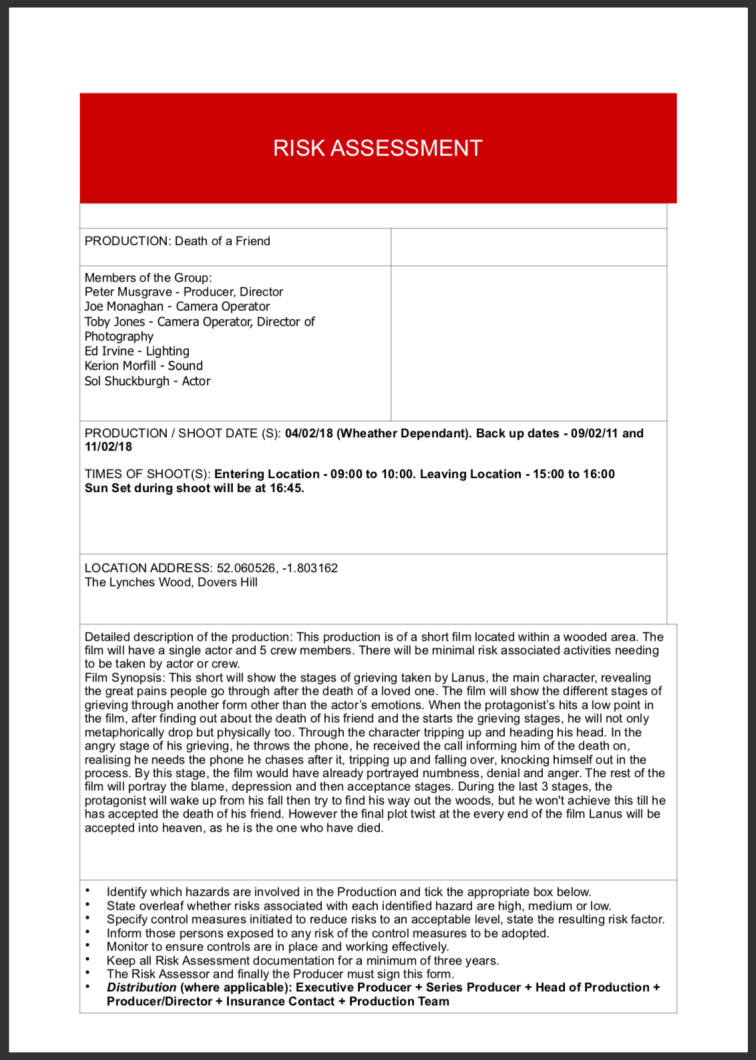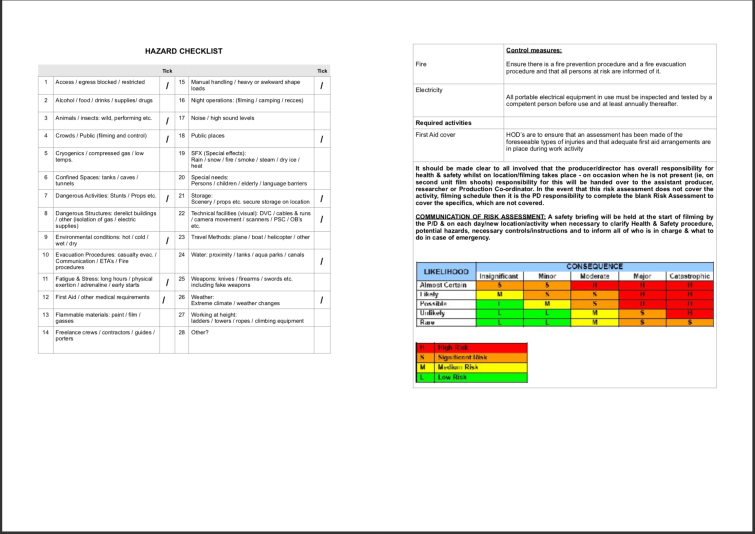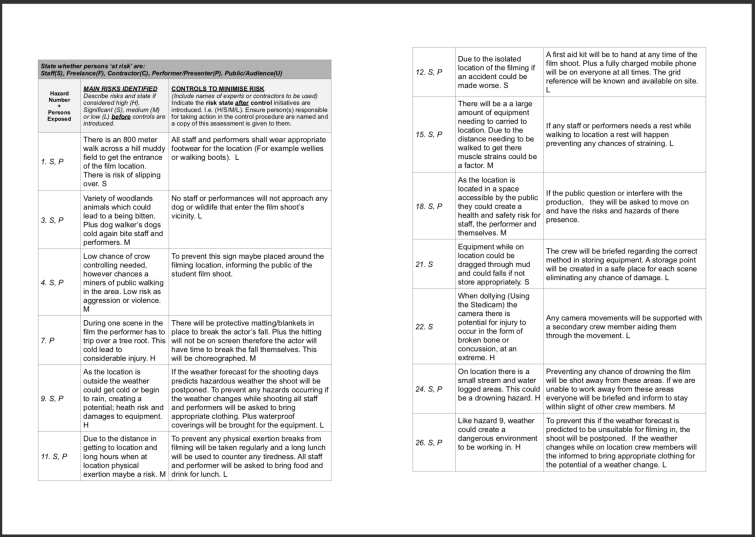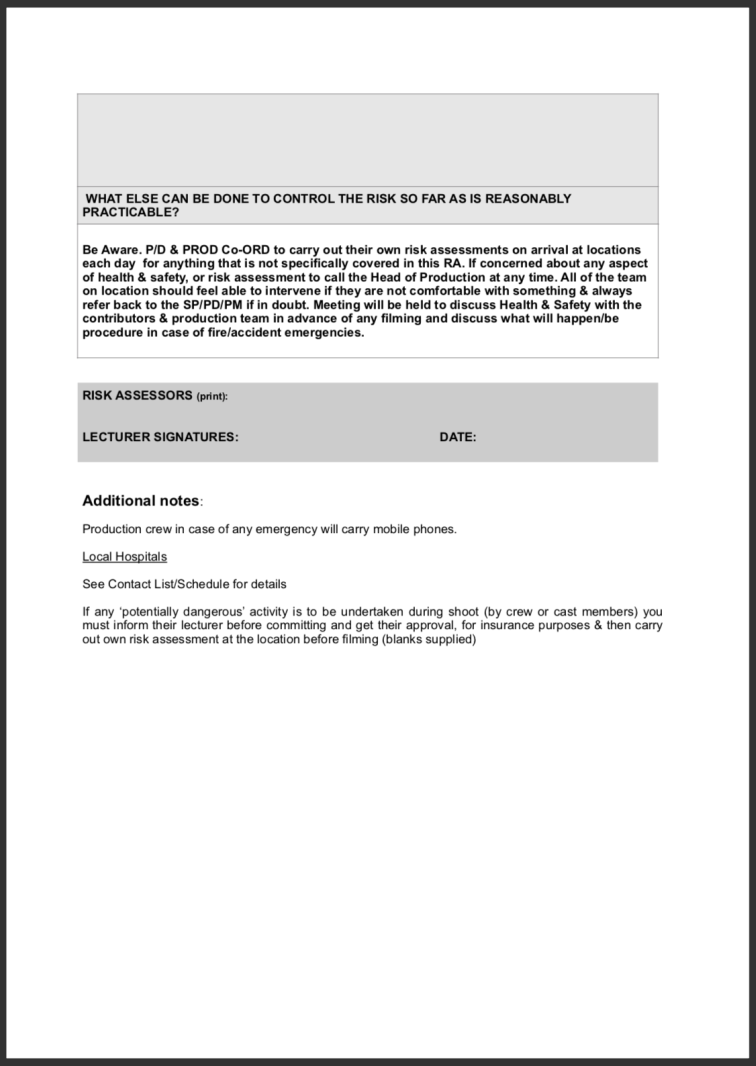Short Film Analysis
Black Swell is a short film, at a mere 9 minutes long, directed by Jake Honig and written by David Rysdald, who also happens to start as Jordan in the film. The film discusses the controversial topic of suicide amongst both old and young people. The film also delves into the reasoning behind such a large decision slightly.
The narrative of the film creates a tension that builds and builds throughout the film. Firstly after a triplet of establishing shots informing the audience of the characters isolation and that storm is brewing. We are introduced to the main character, clearly with something on his mind as he places a sheet over the top of the bed covers in his motel room. The mise en scene of the room suggests our protagonist leads a boring, dull, yet clean and organised life. With little possessions apart from the necessities we are then introduced to the reason for the character to be in this motel room. As the character pulls a gun out from the bag, which happens to be the only item his much larger suitcase. He loads it up with a single bullet and leans back onto his bed, staring up at the ceiling. Which is when the disruption intercepts his equilibrium. Through the start and introduction of the film, the speed of the edit is relatively slow. Containing fairly simply shots, such as Medium shot, MCUPs, OS and POV.
At this stage we hear rock music off screen, originating from the room next door, this disruption completely destroys the peaceful ending our main character was carving. The protagonist decides rather than end his story with rock music in the background, he should confront the neighbor. After knocking on the door and asking for the music to be turned down the neighbor, Jordan recognises the protagonist, whose name is revealed to be Mr. Fennimore, as his ex-maths teacher. From here the disruption turns to conflict as Jordan appearing to be slightly needy and desperate invitees himself into Mr. Fennimore’s room. This starts to provoke the tension for Mr. Fennimore but not for Jordan because of his apparent fragile state. As the film is from Mr. Fennimore’s view the editing speeds up slowly. However, keeping the majority of the shots on Mr. Finnemore while the over-excited Jordan still talking off screen. With little notice from Mr. Fennimore as to the little hints, Jordan is dropping in regards to his emotional and physical state. Jordan notices the alcohol on Mr. Fennimore’s bedside table, he readjusts the power from him controlling it to leveling with Mr. Fennimore as he sits on the opposite bed to Mr. Fennimore. As the pressure continues to grow to a breaking point Mr. Fennimore end it by shouting at Jordan resulting is the self-removal of Jordan.
With the resolution complete, Mr. Fennimore can get on with the task at hand. However, the rock music starts again and as the shot is held with a slight dolly forward. We hear a gunshot from the other room. Resolving the tension even more but also changing the character arch. As Mr. Fennimore goes to investigate the shot the film fades to black ending the narrative.
The lighting used in to film is used to portray the characters feeling of themselves. The whole film is shot in low-key lighting. With only 1 light source on screen through most of the film. The only introduction of another light source is when the two characters meet. This implies that neither character has much light in their life and that in both their futures they will be heading towards a single light.
Without the entire film, there is a distinct lack of any non-dietetic music to create stronger emotions or to fill the sound space where it might be lacking. However, the very reasoning why a soundtrack would be added is exactly why there isn’t one. The emotion created from the editing, camera, lighting and acting techniques is only strengthened by the silence between the dialogue.
Techniques I like and will try and add to my own short film will be the lack of a soundtrack at stages where the protagonist’s emotions require silence to appreciate the ultimate pain they are feeling. This will apply to moments when there is lots of fast action in which a soundtrack may complicate the sequence. Another technique I am keen to exploit is the editing techniques, for example, a slow edit at times of important emotionally and for the narrative. Also only changing the shot when other details need to be seen from another angle. Finally, the simple yet effective lighting to portray an important aspect of the characters and the dark, low-key, lighting due to the position the characters are in.
Synopsis
This short will show the stages of grieving taken by Lanus, the main character, revealing the great pains people go through after the death of a loved one. The film will show the different stages of grieving through another form other than the actor’s emotions. When the protagonist hits a low point in the film, after finding out about the death of his friend and the starts the grieving stages, he will not only metaphorically drop but physically too. Through the character tripping up and heading his head. In the angry stage of his grieving, he throws the phone, he received the call informing him of the death on, realizing he needs the phone he chases after it, tripping up and falling over, knocking himself out in the process. By this stage, the film would have already portrayed numbness, denial and anger. The rest of the film will portray the blame, depression and then acceptance stages. During the last 3 stages, the protagonist will wake up from his fall then try to find his way out the woods, but he won’t achieve this till he has accepted the death of his friend. However, the final plot twist at the very end of the film Lanus will be accepted into heaven, as he is the one who has died.
Treatment
Working Title – Lanus or Death of a Friend
Format – This short film will be shot on either a Nikon D5200 or JVC 150, the decision on which camera will be used will be made close to the filming, each camera shots in different formats, create different styles and allow for different post-production effects. The very small amount of dialogue sound used for the film will be recorded externally from the camera on an H4n recording device. In regards to the distribution of the film, the main access to the audience will be through Youtube. However, the film will also be sent to a variety of Short Film Festivals, which will give some exposure to different areas of the audience and introduce the film to maybe a new audience.
Estimated Duration – Ideally the film will be no longer than 7 minutes, this is to limit the amount of filming to be conducted therefor promoting efficient filming making and to move the narrative along preventing the audience from potentially getting bored. However to allow the narrative to move smoothly and not feel rushed the film should be at least 5 minutes.
Intended Audience – The audience for this film will be all genders, aged between 16 and 30 and from all social class. I’ve opted for such a large target audience because the content of the film affects everyone. Therefore the film is appropriate for all ages. However not so much for younger audiences because of a lacking understanding they may have.
Style – The film’s genre is a combination of the classic, Rebirth with a Voyage and Return tone in the background, overall being classified as Social Integration. Regarding the character’s development, he will take on a Growth Arc, which is where the character has to overcome a fear, weakness or his past to complete the arc.
Rationale – The aim of this project is to create a short film to be sent to film festivals, creating proteins accolades include in showreels and personal statements. This concept I’ve designed is a short film, packed with narrative. This is directly linked to the project scenario.
Feasibility – All aspects of the project will be designed and developed to allow to project to succeed, this could include changing shooting locations to create easier and more travel options for crew and cast. All equipment used will be already owned or able to hire out from college, meaning the film can have a higher production value.
Budget – There will be no budget for this project, all equipment used will either be pre-owned or hired for free from SUCA college media tech department. Any crew member will be voluntary and actors will need to work for free.
Deadlines – The deadline for pre-production on this project is 9th January 2018, this will also be the date where I will pitch my concept. The production and post-production will last a month, therefore the decline will be the 9th February 2018. Finally, the evolution and all the screenings on the film will have to be complete by the 16th February 2018.
Script
Analysis of Storyboard artist
Martin Asbury is a well-known storyboard artist, made famous by his comic he wrote and drew, Zee-Zee’s Terror Zone: One Man’s Meat. He has also worked on a large variety of film’s storyboards over a three-decade career. He’s worked on films such as; Labyrinth, all the James Bound fancies since Goldeneye to Skyfall, Chicken Run and both parts of Harry Potter and the Death Hallows. This is just a snippet of the films he has drawn they storyboards for.
Asbury started his career in cartoon and storyboard drawing at Saint Martin’s School of Art, London. After leaving education, Asbury assistant comic strip witters Dan Barry on the weekly comic strip, Flash Gordon. Providing his with key experience to continue into the industry. For the next stage of his career, Martin drew a mixture of greetings cards and different comic strips. before landing a football strip at TV Centre 21.
In 1971 Asbury got his first chance to make a splash onto the TV sense with the redevelopment of Countdown a comic strip he had worked on earlier in his career. From here Asbury went on to work on a number of TV shows such as; Six Million Dollar Man, Doctor Who and then working for TV Times a Star Wars comic strip in 1982. Two years later Asbury started his first movie, Greystoke: The Legend of Tarzan, Lord of the Apes.
It wasn’t until 1994 that Asbury would storyboard another film. He was invited to Storyboard Golden Eye, which blew the doors off to his career. Since then he has worked on all James Bond films till Skyfall.
Asbury’s style is very clean cut, is drawings are clean in their depiction of the characters and objects in the shot and more recently he has moved into using computer animated drawings to storyboard films.
Storyboard
Colour Pallet
To find the colours my short will be using I created a mood board of colours and shots I will be using in the film.




As the character in my short film moves through the narrative the colour spectrum will change accordingly. So as the character reaches the end of the narrative the colour spectrum will shift to happy feeling yellow based tone, creating an even stronger sense of the character’s achievement.
Test Shoot
From early on in this project I wanted to get a test shoot using the lighting equipment, trying different setups. I used the shoot to compare different speeds in the edit and how the soundtrack will add to the overall tone and emotions portrayed by the film.
Production Schedule
Location Obtainment
Emails between National trust and Myslef 

Email asing to SUCA PLI

Risk Assessment
Crew List
Producer – Pete Musgrave
Director – Pete Musgrave
Lanus – TBF (Casting)
Camera op -Joe Monaghan
Equipment, props, budget and resources list
For the camera I will use either DSLR or JVC 150, I am still to decide which would be best. Both cameras have positives and negatives of using them.
3x LED Lighting Panels. I may request the use of one or two of the HND lights to create a harder light. Which may be needed for 50/50 shots.
Tripod
Fake blood – This may be used to show that Lanus has picked up a head injury with a minor amount of the fake blook being applied to his head after the physical fall he takes.



